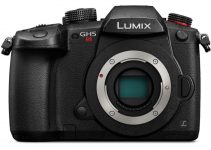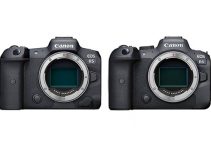Bigger sensors mean bigger cameras right? Apparently not since the release of the Panasonic S5 and its full-frame sensor packed into a body smaller than even the Micro Four Thirds GH5. This means the argument to stick with the GH5 is not quite as strong as it used to be when full-frame cameras just started being released.
Carl Yates from ProAV TV breaks down the difference between the S5 and GH5, pointing out where each of the cameras excels. He points out how good the GH5 was when it was released and how that means it’s still great today – even if it isn’t perfect. Now, with the improvements in the S5 is it time to upgrade from the classic MFT system?
Yates starts with the GH5, which is over three years old at this point! It has been a reliable and practical camera with a good size and the ability to work with a wide range of lenses.
There’s a flip-out screen, optional XLR unit, solid battery life, no recording limits, and a variety of recording formats. There was even 10-bit internal.
Where the GH5 fell short was in a couple of key areas: low-light and autofocus. This is where the Four Thirds sensor finds its limit. The small size of the camera means it is well suited to travel anywhere, but the low-light performance meant it wasn’t the best choice for any time.
Then, the AF system just isn’t what we have come to expect these days. Cameras can now effectively track faces and objects during recording, and the GH5 just can’t hit the same level of performance as the newer releases.
With the S5 Panasonic has actually created a wonderful full-frame camera. The camera is even smaller than the GH5. Also, the full-frame sensor will help capture that distinct look with shallow depth of field and provide better low-light performance.
Many accessories, such as Speedboosters, helped mimic this look on the GH5, but straight out of the box it is hard to deny there is a noticeably difference.
Compared to the GH5, the S5 maintains a similar degree of practicality and usability thanks to the compact size versus the larger S1 and S1H. Also, its in-body image stabilization seems to match the performance of the GH5.
After many years of development, it seems Panasonic has made the controls feel a bit better and more intuitive. This is another huge win for the S5.
When it comes to lenses and accessories it is nice to see the 20-60mm being such a good fit for the S5. The GH5 was generally used with larger, adapted glass that made it bulkier than you likely wanted it to be.
As for other accessories, the S5 features a new higher-capacity battery which happens to work with the GH5, though you can’t use GH5 batteries in the S5.
The GH5 does seem to win in Yates view on recording formats. The GH5 has no recording limits on anything. The S5 has a 30-minute limit in the 10-bit modes.
Also, All-I is available on the GH5 but not on the S5. Keep in mind, the S5 is getting a firmware update to unlock 5.9K raw output over HDMI.
In Yates opinion, the advantages of the S5 over the GH5 make it so worth it. The boost to low-light and autofocus are the biggest issues of the GH5, and both are effectively solved with the S5. This makes anything you might be giving up from the GH5 not a major problem. The S5 is looking to be an amazing option. It’s practically just as good as a GH5, but with a full-frame sensor.
Are you thinking of picking up an S5 and giving up your GH5?
[source: ProAV TV]
Order Links:
- Panasonic LUMIX S5 Mirrorless Camera (B&H, Amazon)
- Panasonic LUMIX S5 Mirrorless Camera with 20-60mm Lens (B&H, Amazon)
- Panasonic LUMIX S 20-60mm f/3.5-5.6 Lens (B&H, Amazon)
- Panasonic LUMIX GH5 Mirrorless Camera (B&H, Amazon)
Disclaimer: As an Amazon Associate partner and participant in B&H and Adorama Affiliate programmes, we earn a small comission from each purchase made through the affiliate links listed above at no additional cost to you.



